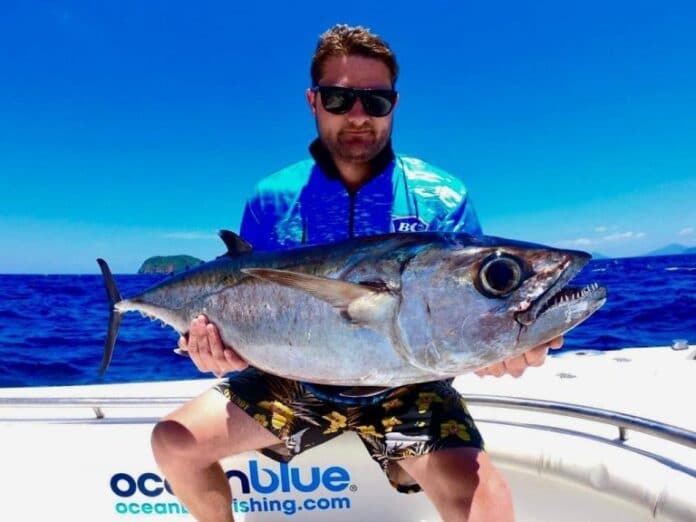You’ve caught your fish of a lifetime and have it boat-side. As the angler, you’d have to take care of the fish as well to offer it the best chances of survival after a brutal fight. Here’s how we do it as a team.
The high fives are flying around left, right, and center and your heartbeat is racing along the same beats as an angry racehorse. You have finally done it! You have landed that dream fish that you have oh so long wished for. You’ve spent so much time watching videos, researching and spending lots and lots of money on lures, upgrading terminal tackle and tying your knots 700 times. Your body is shaking, arms and legs like jelly and the guide lifts up the fish on your lap for a few photos. Here are some tips on how to treat and handle your fish if you plan on a healthy release.
Here’s a probable scenario that can happen. You have used your ultimate angling skills to get this fish boat side, let’s say a 45kg giant trevally. The guide or your mate has lead the fish and its doing its circle work at the boat.
1 Firstly, think of your safety. Then the fish’ safety second. You should somewhat always expect to catch a fish so keep your gloves on from casting to fishing to landing the fish. Most fish have nasty sharp stuff that can hurt you somehow and tail of GTs have “scutes” along its tail which are extremely sharp. You’ll be grabbing on to the tail wrist of a GT if you are to handle it safely and securely, so gloves are of great importance for safety. Wet your gloves before touching the fish to avoid removing the protective slime they have on their bodies.
2 Once you see color or the fish, the mate, skipper, or guide should “prep” the deck for the fish. Ideally, a wet and thick fish mat should be ready for the fish but if you find yourself without a fish mat, use your saltwater deck wash to wet the area of the deck you plan on putting the fish on after lifting it into the boat. Keeping the surfaces that touch the fish wet is important for the health of the fish. Like before, dry contact with a fish’s skin will cause damage by removing its protective slime coating and can decrease its chances of survival after release.
“Always remember that a fish out of water is like you holding your breath.”
3 With a fish of this size you really want to do a dual lift where someone lifts from the front end while another grabs the tail wrist and lifts from behind. This way no unwanted stress to the jaw or the spine of the fish will occur. On smaller fish you can grab the leader close to the lure and lift up simultaneously with your partner on the tail. But for bigger fish, a lip gaff is recommended. When gaffing the lip, be careful not to gaff the tongue of the fish as this may cause serious damage that the fish may not recover from. You’ll find soft skin tissue that the gaff can easily penetrate along the sides of the tongue. A swift and firm pull on the gaff handle will ensure solid penetration. Once you have a solid gaff hold and the partner on the tail has a solid grip (ideally with 2 hands), lift the fish in together with even weight distribution and place it on the wet fish mat or deck.
4 Always remember that a fish out of water is like you holding your breath. How long you can hold your breath is a good way of timing how long your fish should stay out of the water. In a perfect world, you’d have a big tub filled with the water you’re fishing in like a giant livewell, and you place the fish in it while you unhook the fish and prepare for photos and weight measurement. But in the real world, a deck wash to pump saltwater into the mouth of the fish will be better than nothing. If a deck wash is unavailable, make sure you are bucketing water into the fish’s gills. Get the hooks out as fast as possible without hurting yourself and causing further damage to the fish’s mouth. Once the lure is out, store far from where the work is on-going for safety.
5 Time for the photo. Anglers should be ready and seated on a low platform, preferably the casting deck, esky or bench seat with a wet towel on their lap. Guide, mate or co-angler will work together to lift the fish onto your lap for photo taking.
6 Now that you have taken a photo of every different angle possible it’s time for the release. It all depends on how high you are from the water line but the best way is to lower them over the side and hold onto her tail, she will let you know when she is ready to go.
7 Cheers! Now for the most important part of the process. More high 5’s and a celebratory beer! Can’t release a bus GT without a celebratory beer.If you are looking for a true sport fishing company that offers specialized topwater and jigging adventures anywhere in the Pacific Islands, contact Ocean Blue Fishing now for your Vanuatu Fishing trips and needs!

